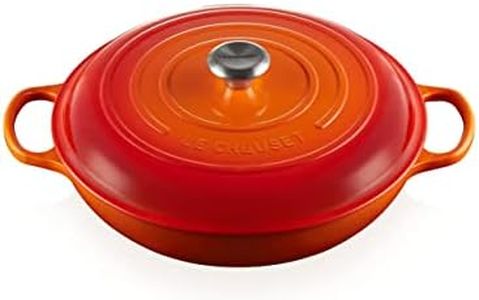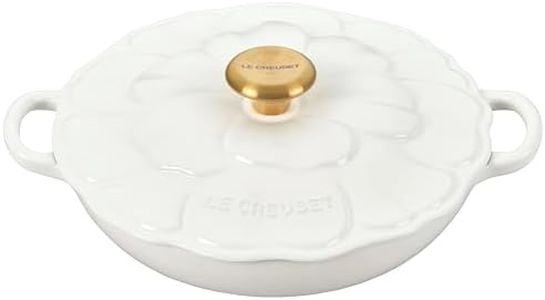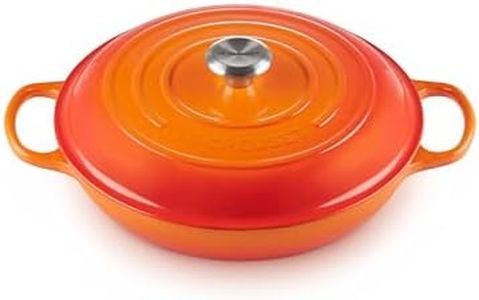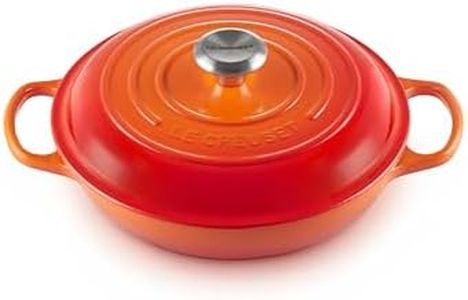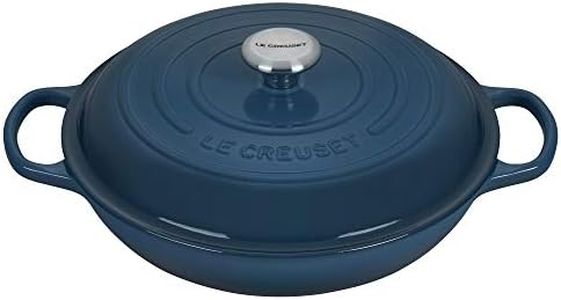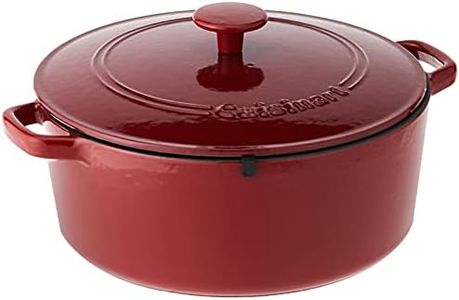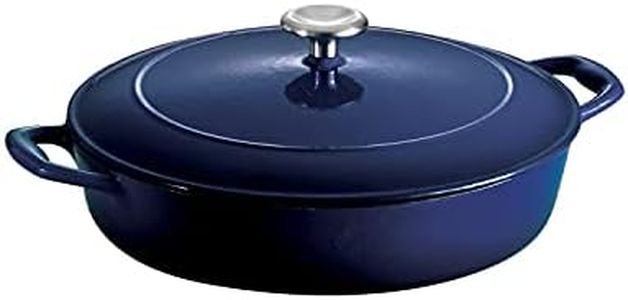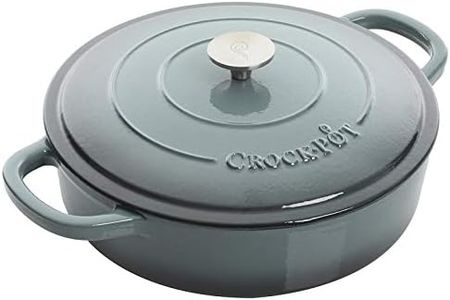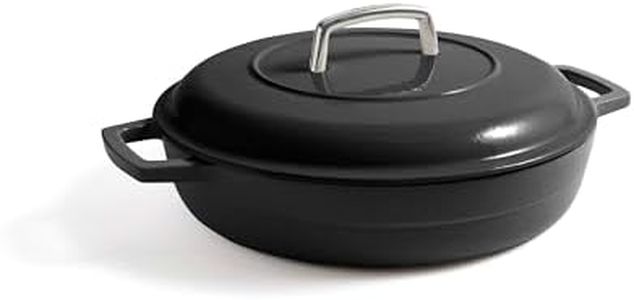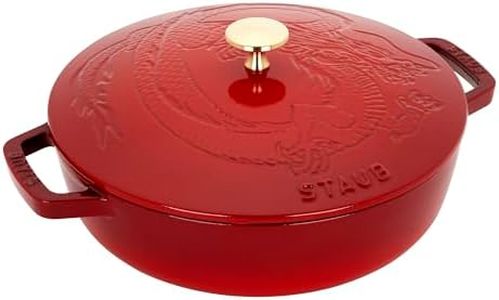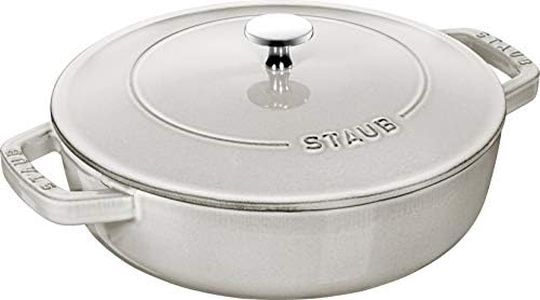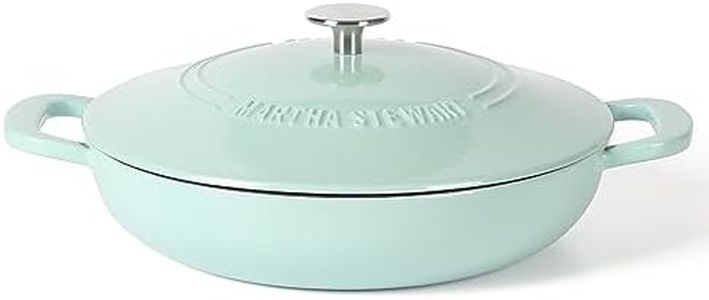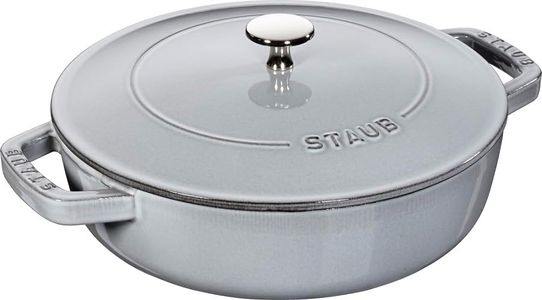We Use CookiesWe use cookies to enhance the security, performance,
functionality and for analytical and promotional activities. By continuing to browse this site you
are agreeing to our privacy policy
10 Best Cast Iron Braisers
From leading brands and best sellers available on the web.Buying Guide for the Best Cast Iron Braisers
Choosing the right cast-iron braiser can make a big difference in your cooking experience, especially if you like to prepare dishes that require gentle browning, simmering, or slow roasting. A good braiser offers versatility, durability, and even heat distribution, helping you create delicious one-pot meals with ease. To find the best braiser for you, it's important to understand the key specifications and how they match up with your cooking habits and kitchen space.Size (Capacity)The size or capacity of a cast-iron braiser is measured in quarts or liters, and choosing the right size depends on how many people you cook for and what types of dishes you prepare. Smaller braisers, around 2-3 quarts, are ideal for couples or side dishes, while medium options, about 3.5-4 quarts, work well for small families or versatile recipes like chicken thighs or vegetables. Large braisers, 5 quarts or more, are great for big families, meal prepping, or entertaining. Think about the portion sizes you typically make and how a little extra room can help with stirring or tossing ingredients.
Shape (Round or Oval)Braisers usually come in round or oval shapes, and the best choice depends on your stovetop and the types of dishes you plan to cook. Round braisers fit well on most burners and are suited for risottos, paellas, and stews, while oval braisers can better accommodate longer cuts of meat or whole poultry. If you have limited stovetop space, round is the safer bet, but if you often cook roasts or larger ingredients, an oval shape may serve you better.
WeightCast iron is naturally heavy, but the weight of a braiser varies by size and construction. Heavier braisers retain and distribute heat more evenly, but they can be challenging to maneuver, especially when full. If you prefer easy handling or have difficulty lifting heavy cookware, consider a size and shape that feels comfortable for you to move around the kitchen, remembering that even smaller braisers will gain significant weight once filled with food.
Lid FitA well-fitting lid is key for effective braising, as it traps moisture and heat to enhance flavors and maintain tenderness. Look for braisers with lids that feel snug and secure, without large gaps. Some lids are self-basting, with bumps or ridges on the underside to collect and redistribute condensation, which can be helpful for certain dishes. If you plan to make long-simmering dishes often, prioritize a good lid fit.
Interior Enamel QualityMost modern cast-iron braisers have an enamel coating inside to prevent sticking, resist rust, and make cleaning easier. The smoothness and durability of the enamel impact both food release and the longevity of the pan. Lighter-colored enamel makes it easier to monitor browning, while darker enamel can hide stains over time. If you want less maintenance and simple cleanup, look for high-quality, chip-resistant enamel.
Oven and Stovetop CompatibilityCast-iron braisers can usually transition from stovetop to oven, but temperature limits and compatibility with induction or other stovetops can vary. Check for markings or descriptions that confirm compatibility with your cooktop and the highest oven temperature you might use. This is important if you like to start dishes on the stove and finish them in the oven, or if you use high heat for baking, roasting, or broiling.
Ease of CleaningSome braisers are dishwasher safe while others require hand washing. While enameled cast iron is generally easier to clean than bare cast iron, it still benefits from gentle cleaning to protect the surface. If you want easier maintenance, look for smooth enamel finishes and avoid products that require seasoning or delicate care. Consider your comfort with hand-washing heavy cookware when choosing a braiser.
